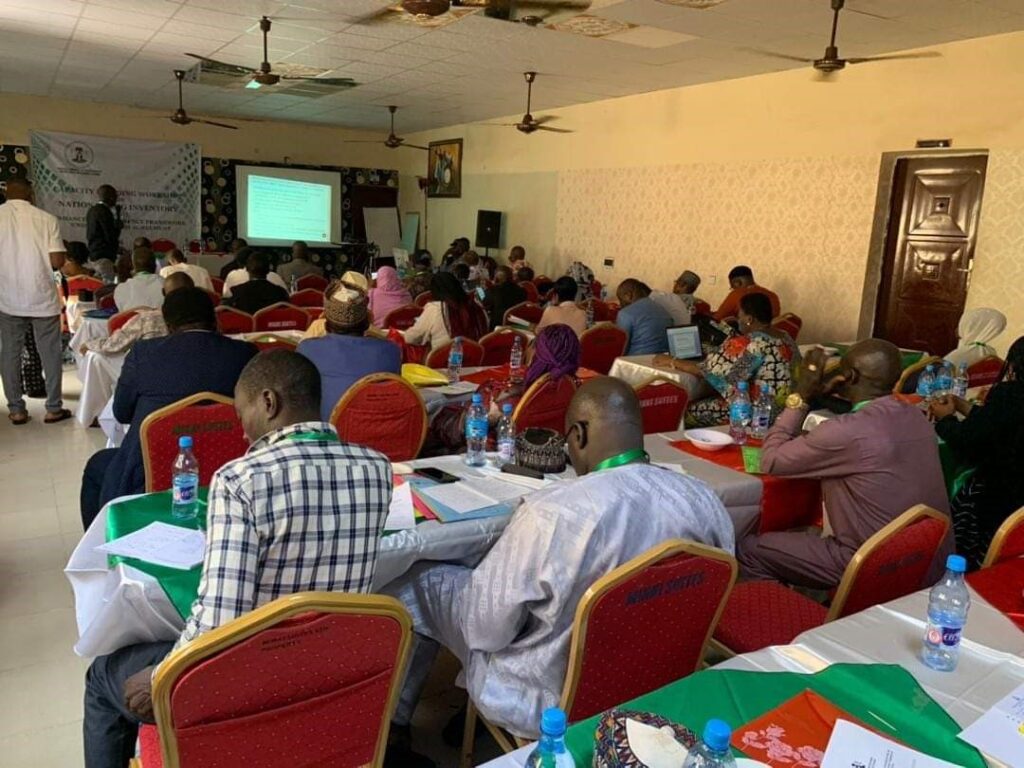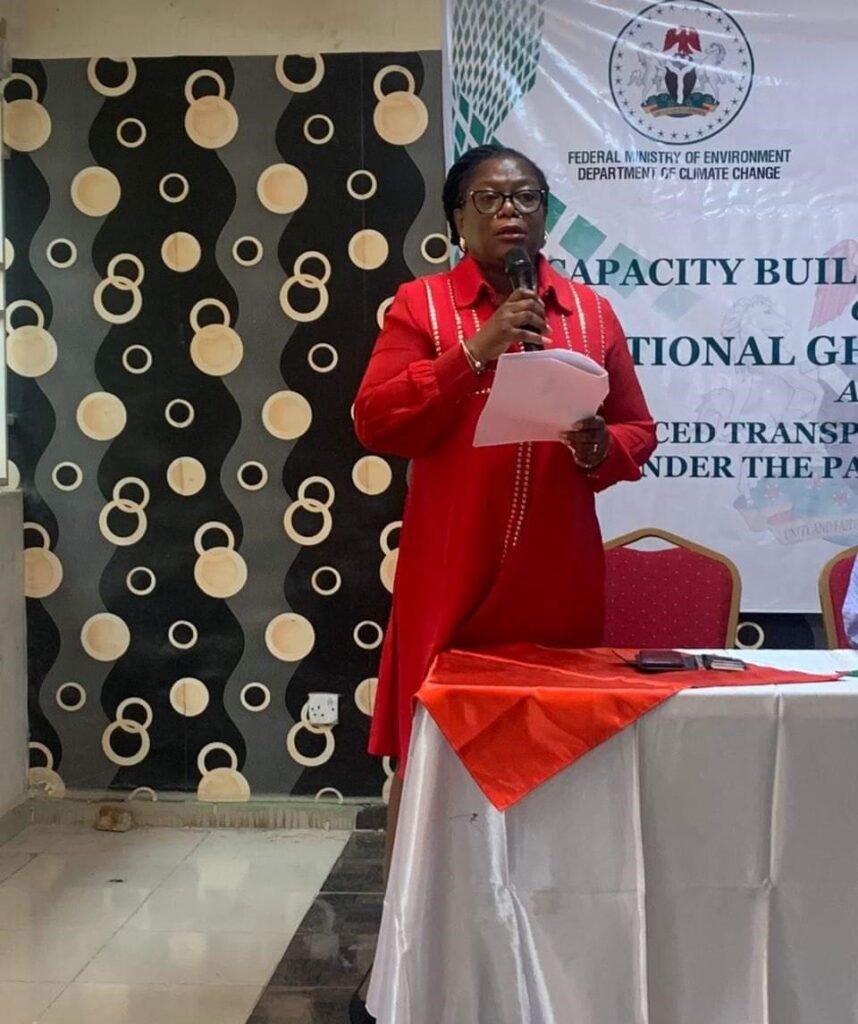
National President at the Workshop on Strengthening Capacity to prepare and manage the National GHG Inventory for effective transition.
National President at the Workshop on Strengthening Capacity to prepare and manage the National GHG Inventory for effective transition.
 A photo showing the NES national president with dignitaries at the high table.
A photo showing the NES national president with dignitaries at the high table.
The workshop was actually to Enhance transparency framework under the Paris Agreement, this was organised by the @fmenv Department of Climate change.
 A photo of the participants at the event.
A photo of the participants at the event.
So many discussions, deliberations and enlightenment were thrown concerning the issues of Climate change by some of the Experts that were present at the event. To a low-carbon economy, A greenhouse gas (GHG) inventory is a comprehensive assessment of all the greenhouse gases emitted by an organization, industry, or country. It is an essential tool for effective transition to a low-carbon economy as it helps to identify the sources of emissions and prioritize actions to reduce them.
 A photo showing the NES national president delivering a speech.
A photo showing the NES national president delivering a speech.
The GHG inventory typically includes emissions from various sectors such as energy, transportation, agriculture, and waste management. It covers all the major greenhouse gases, including carbon dioxide (CO2), methane (CH4), nitrous oxide (N2O), and fluorinated gases (F-gases).
 A photo of the participants during a technical sessions.
A photo of the participants during a technical sessions.
The inventory provides a baseline for measuring progress towards reducing emissions and achieving climate targets. It also helps to identify opportunities for emission reductions and cost savings. For example, an organization may identify energy efficiency measures that can reduce emissions and save money on energy bills.
The GHG Inventory can also be used to communicate the organization’s environmental performance to stakeholders, including customers, investors, and regulators. It demonstrates the organization’s commitment to sustainability and helps to build trust and credibility.
 A photo of an official delivering a speech.
A photo of an official delivering a speech.
To ensure the effectiveness of the GHG inventory, it is important to follow internationally recognized standards and guidelines, such as the Greenhouse Gas Protocol. This ensures that the inventory is transparent, accurate, and comparable across different organizations and sectors.
